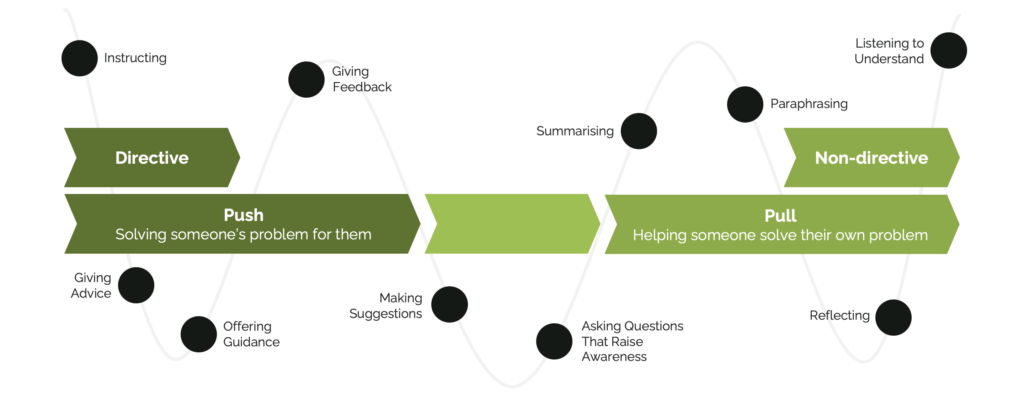What is coaching?
Coaching is the art of facilitating the performance, learning and development of another.
Partnering with clients in a thought-provoking and creative process that inspires them to maximize their personal and professional potential.
Coaching is unlocking a person’s potential to maximize their own performance. It is helping them to learn rather than teaching them.
Coaching is bridging the gap between where you are now and where you would like to be.

Picture: UK Coaching (2023)
Spectrum of coaching skills
Coaches generally use a mixture of directive (solving someone’s problem for them) and non-directive (helping someone solve their own problem) coaching to inspire, support, develop and challenge the individual(s) they are coaching. The spectrum of coaching skills below developed by Myles Downey highlights some of the tools a coach might use from instructing to questioning, to listening to understand.
This model can be applied to coaching in a sports environment, in a business and in life. Directive coaching is about telling or explaining something alongside a demonstration that can be copied by another individual. Non-directive coaching is about listening, questioning and having the individual reflect and find their own answers and strategies.
Both coaching styles, directive and non-directive are very effective and can dramatically improve performance, however, the style used by the coach depends on the situation and outcome required by the coachee or individual(s).

Spectrum of Coaching Skills: Downey, M. (2003) Effective Coaching: Lessons from the Coach’s Coach (2nd Ed). Pg, 23.
I hope this post was of value to you. I’d love to hear your thoughts, please do send me a message on Instagram (simonjamescoaching).
Thank you for reading.
Simon James



